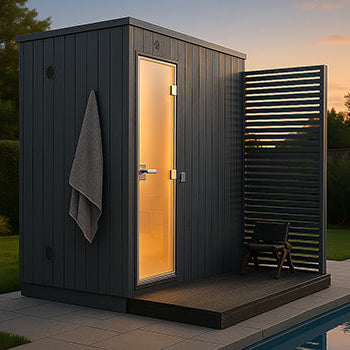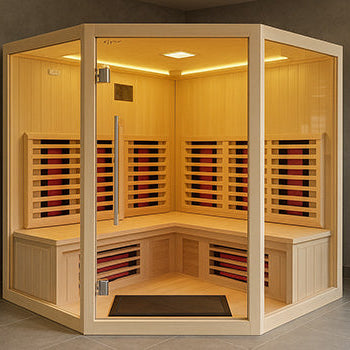Ever wished you could just sit, sweat, and flush out all the bad stuff—along with that extra slice of cake?
You're not alone.
Many folks love escaping to their snug indoor sauna retreat or unwinding in an outdoor sauna under the stars, dreaming of an easy detox fix.
But here’s the truth bomb: you can’t sweat out all those toxins—or fat.
That said, saunas deserve a gold star for relaxation, circulation, and feel-good vibes.
Curious why your sweat isn’t doing the detox heavy lifting? Let’s break it down—no lab coat needed.

The Sauna "Detox": Can You Really Sweat Out Toxins?
We've all seen those social posts, right?
“Sweat out the toxins in 20 minutes!”
It’s a comforting image—like turning your body into a self-cleaning oven.
But the science? It’s rolling its eyes.
Let’s turn down the hype and see what’s happening inside your body when you’re dripping in sweat.
What "Detoxification" Actually Means for Your Body
First off, detox isn’t some rare process that only kicks in when you’re sweating buckets.
Your body’s built-in detox system is working around the clock—whether you’re in the sauna or line for a latte.
The real MVPS? Your liver and kidneys.
They break down harmful substances and wave them goodbye through your pee or poop.
Sweating? It’s more of a side hustle—it cools you down, but it’s not your body’s go-to detox route.
The Primary Purpose of Sweating: Cooling Down
Let’s keep it simple.
Sweating is your body’s version of an air conditioner on overdrive.
When you’re in a toasty indoor infrared sauna or a rustic outdoor barrel sauna, your body freaks out a little and starts sweating to stop you from overheating.
It’s survival mode, not spa detox mode.
Analyzing Sweat: What Are You Actually Losing?
Those rivers of sweat running down your face?
Let’s peek inside and see what they’re made of.
Water and Electrolytes: The Main Components
Spoiler alert—it’s mostly water, with a sprinkle of electrolytes like sodium and potassium.
That’s why, after a steamy outdoor sauna session, you’re parched, not magically cleansed of all the nasties.
Think of it like watering a garden, not scrubbing the pipes clean.
Are Toxins Like Heavy Metals Present in Sweat? (Trace Amounts)
Yes, research shows tiny traces of heavy metals like mercury and lead can show up in sweat.
But it’s a trickle, not a flood.
If you’re banking on sweat to detox your system, you might be waiting a while.
Your body prefers faster, more efficient exit routes.
Your Body's Natural Detox System: Liver and Kidneys

Here’s where the real detox action happens—no sauna required.
How Toxins Are Processed and Removed Efficiently
Your liver is the boss, transforming toxins into harmless compounds.
Your kidneys back it up, filtering your blood and sending waste out through your urine.
This dynamic duo is working 24/7—whether you’re sweating in a Finnish outdoor sauna or curled up watching Netflix.
Sweat vs. Other Excretory Pathways: A Comparison
If your body had a detox leaderboard, sweat wouldn’t even make the podium.
It’s the backup dancer, while your digestive and urinary systems steal the spotlight.
Sweat is there to help you cool down, not clean up.
Debunking the Sauna Detox Myth: The Scientific View
Love your sauna time?
Good news—you don’t have to stop.
But it’s time to toss the detox myths aside.
Why Experts Say Saunas Aren't Effective Detoxifiers
Experts agree: saunas are fantastic for relaxation, not for flushing out toxins.
Scientific studies back this up.
Sure, a sweaty session can boost circulation, ease sore muscles, and leave you feeling zen.
But it’s your liver and kidneys doing the dirty detox work—sauna or no sauna.
Conclusion: Enjoy Saunas for Relaxation, Not Toxin Removal

At the end of the day, saunas are like that friend who always brings good vibes.
They’re great for relaxation, mood boosts, and melting away stress.
But if you think they’re the secret to detox paradise?
Better give your liver and kidneys a standing ovation instead.
So enjoy your sauna moments—whether it’s in a scenic outdoor garden sauna or your cosy indoor home spa cabin—and savour the sweat for what it is: feel-good, not fix-it.
















